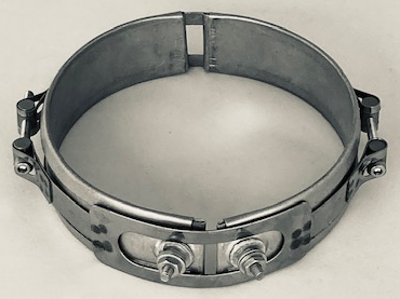
A mica band heater stands out due to its unique design and unparalleled efficiency in industrial heating solutions. Its operation might appear complex initially, but its underlying principles are simple. So, how does a mica band heater work? Let's delve deep into its operational mechanics.
The principle of electrical resistance is at the heart of a mica band heater's operation. When voltage is applied to the heater's termination, it courses through the mica-insulated resistance wire. This wire, surrounded by a protective metal sheath, resists the electric current, generating heat. This heat is then swiftly and efficiently transferred to the encompassing metal sheath.
Every cylindrical object has unique dimensions, whether a barrel holding plastic or a pipe transporting water. The mica band heater is designed to fit these cylindrical entities outside diameter and width. This snug fit ensures optimal heat transfer, maximizing efficiency and reducing energy wastage.
The primary goal of the mica band heater is to transfer its generated heat to the cylindrical object's outer diameter (OD). Depending on the application, this object might contain various materials, from plastic and water to different types of gas. This transfer process is vital for these materials to be maintained or brought to specific temperatures.
Given their versatility, these heaters can be tailored with designed electrical characteristics for each unique application. This mica band customization ensures that the mica band heater performs optimally, irrespective of the demands of the process.
After the initial setup, the magic begins when voltage is introduced. The mica-insulated resistance windings generate heat and are transferred to the heater's metal sheath. However, proper heat dissipation is paramount for the heater to function efficiently over prolonged periods. A mica band heater must be securely installed, ensuring a tight fit and adequate clamping. This setup ensures that the cylindrical object is mounted as a heat sink, continuously siphoning heat away from the heater and transferring it to the internal material.
The mica band heater is a testament to engineering ingenuity, blending principles of electrical resistance with tailored design to offer optimal heating solutions. Its modus operandi, while rooted in simple physics, results in a powerful and efficient heating process crucial for various industrial applications. As with any intricate tool, its performance depends on proper installation and usage, ensuring a harmonious balance between heat generation and dissipation.